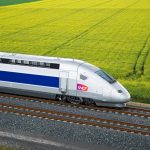 Whilst railways don’t always appear to be the most innovative of industries, there have nonetheless been some fascinating developments in recent times. For instance, I wrote earlier this year about the German start-up KONUX, who have developed a technology that sits on the tracks and detects the wear and tear of the tracks automatically.
Whilst railways don’t always appear to be the most innovative of industries, there have nonetheless been some fascinating developments in recent times. For instance, I wrote earlier this year about the German start-up KONUX, who have developed a technology that sits on the tracks and detects the wear and tear of the tracks automatically.
Or you have the EU backed project to develop smarter signalling technology. Central to the project is a simulator called ATLAS (Advanced Train LocAtion Simulator), which allows the train to be configured or analyzed alongside its on-board location system. It even allows the route of the train to be examined, whilst also providing performance evaluation that provides a visual output of a number of simulations.
Quiet tracks
The latest project along these lines is the EU QUIET-TRACK, which is working to make tracks not only quieter but also provide a similar kind of monitoring service to that provided by KONUX.
The project was especially targeting low frequency noise generated by the wheel to rail contact. By doing this, it was also capable of making accurate predictions of track decay. The project saw a number of solutions proposed, including one that recorded a noise reduction of around 6 dB(A).
Arguably more powerful than the noise dampening aspect of the project however is its ability to monitor the track for defects. Rather than using vibration, as KONUX do, the system works by monitoring the sound of the trains as they zoom over the tracks.
The system consists of microphones attached to the wheel apparatus on the train together with GPS receivers and a tachometer on the axle. This allows for data to be collected on the roughness of the track and wheel.
By analyzing this data it was not only possible to map noise levels but also to suggest parameters for roughness levels, which then feed into maintenance work.
The team have developed what they’re calling a Noise-related Track-maintenance and Management Tool (NMT) to package up this work for rail engineers. The NMT not only maps noise pollution from the tracks but is also capable of highlighting the outcomes of various noise mitigation attempts.
It’s then capable of combining this with population data to highlight how many people might be affected by any changes to noise from the tracks. The data on track and wheel roughness is available for the whole network to aid the maintenance of the track, and the team are confident in the possible cost-savings that result from the work, whether through improved maintenance or reducing the need for more traditional noise mitigation interventions.
With maintenance costs alone running into billions for national rail networks, the potential savings are significant. It will be fascinating to see how successful the likes of KONUX and QUIET-TRACK are at infiltrating the market.